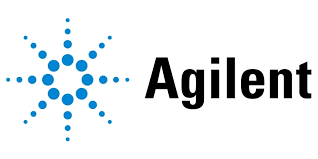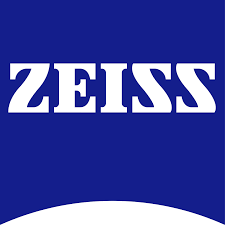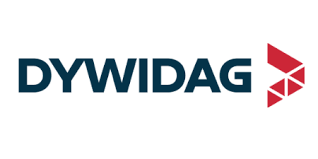Soft Skills Gamification
Published Date: 02 June 2025 | Report Code: soft-skills-gamification
Soft Skills Gamification Market Size, Share, Industry Trends and Forecast to 2033
This report offers a comprehensive analysis of the Soft Skills Gamification market over the forecast period 2024 to 2033. It examines market trends, sizing, segmentation, and regional dynamics while providing insights into technological innovations, product performance, and the competitive landscape. The report is designed to help stakeholders understand emerging opportunities and market challenges.
| Metric | Value |
|---|---|
| Study Period | 2024 - 2033 |
| 2024 Market Size | $3.50 Billion |
| CAGR (2024-2033) | 7.2% |
| 2033 Market Size | $6.66 Billion |
| Top Companies | GamifyPro Solutions, SkillSoft Dynamics |
| Last Modified Date | 02 June 2025 |
Soft Skills Gamification (2024 - 2033)
Soft Skills Gamification Market Overview
Customize Soft Skills Gamification market research report
- ✔ Get in-depth analysis of Soft Skills Gamification market size, growth, and forecasts.
- ✔ Understand Soft Skills Gamification's regional dynamics and industry-specific trends.
- ✔ Identify potential applications, end-user demand, and growth segments in Soft Skills Gamification
What is the Market Size & CAGR of Soft Skills Gamification market in {Year}?
Soft Skills Gamification Industry Analysis
Soft Skills Gamification Market Segmentation and Scope
Tell us your focus area and get a customized research report.
Soft Skills Gamification Market Analysis Report by Region
Europe Soft Skills Gamification:
Europe is an important market region, with its Soft Skills Gamification sector expected to grow from 0.95 billion in 2024 to around 1.80 billion by 2033. European organizations are increasingly incorporating gamified learning platforms to enhance employee skills and foster a competitive edge in a rapidly digitizing economic landscape. Strict regulatory frameworks and high consumer expectations push companies to innovate continuously, integrating advanced analytics and user-centric design elements. The progressive adoption of gamification in both higher education and corporate training environments is positioning Europe as a fertile ground for market expansion and technological advancements.Asia Pacific Soft Skills Gamification:
In the Asia Pacific region, the Soft Skills Gamification market is positioned for significant growth. Starting from an estimated market value of 0.67 billion in 2024, the region is expected to expand to 1.28 billion by 2033. Rapid digital transformation, increased investment in education and corporate training, and a younger, tech-savvy population contribute to a favorable market environment. Innovations in mobile-based applications and localized content are propelling the region's advancements. Cultural factors paired with government initiatives fostering digital education further underscore its growth potential, making Asia Pacific a key focus area for market players.North America Soft Skills Gamification:
North America remains a dominant player in the global Soft Skills Gamification market with market values expanding from 1.21 billion in 2024 to an anticipated 2.29 billion by 2033. The region’s robust technological ecosystem, well-established corporate culture, and continual investments in advanced learning platforms bolster this growth trajectory. Here, early technology adoption and continuous innovation in integrated gamification tools are driving both corporate and educational sectors. Market leaders in software development and training services are steadily evolving their product lines to meet the increasing demand for immersive and adaptive learning experiences.South America Soft Skills Gamification:
The South American market, recorded here as Latin America, shows promising growth prospects with market values expected to rise from 0.33 billion in 2024 to 0.64 billion by 2033. Increasing investment in digital infrastructure and progressive educational reforms are driving adoption in both corporate and academic sectors. Companies in this region are starting to recognize the value of gamified training in enhancing workforce competencies. Despite some economic uncertainties, local innovations and collaborations continue to improve market awareness, making it a vibrant market with emerging opportunities for growth.Middle East & Africa Soft Skills Gamification:
The Middle East and Africa region, though relatively nascent in terms of market maturity, is showing encouraging signs of growth with market projections rising from 0.34 billion in 2024 to 0.65 billion by 2033. Increased governmental funding in educational reforms and initiatives to boost digital literacy are key factors driving this change. Companies in this region are beginning to adopt gamified solutions to improve training outcomes and enhance workforce competencies. Despite challenges related to infrastructure and initial technology costs, the region’s strategic investments and evolving business landscapes are paving the way for sustainable market development.Tell us your focus area and get a customized research report.
Soft Skills Gamification Market Analysis By Product
Global Soft Skills Gamification Market, By Product Market Analysis (2024 - 2033)
This segment covers the performance and growth trajectory of various product types in the Soft Skills Gamification market. Mobile applications stand out as the leading driver with market sizes growing from 2.13 billion in 2024 to 4.05 billion in 2033, maintaining a stable share of approximately 60.83%. Desktop software and web-based tools complement mobile offerings; desktop software exhibits growth from 0.80 billion to 1.52 billion and retains a share near 22.83%, while web-based tools progress from 0.57 billion to 1.09 billion with a consistent share of 16.34%. These product types collectively address diverse user needs, ensuring the market remains adaptive and innovative in meeting demands for interactive and immersive learning solutions.
Soft Skills Gamification Market Analysis By Industry
Global Soft Skills Gamification Market, By Industry Market Analysis (2024 - 2033)
The industry segment analysis reveals significant penetration across various sectors. Corporate training is the most dominant industry segment, with its market size expected to increase from 2.01 billion in 2024 to 3.82 billion in 2033, commanding a share of approximately 57.4%. The education sector, with similar metrics as desktop software, continues to expand its reach by integrating gamified learning environments in classrooms and online. Healthcare is emerging as a vital segment with growth from 0.35 billion to 0.66 billion, while customer service is also experiencing similar growth trends. These sectors benefit from improved soft skills training methodologies which boost operational efficiency and workforce agility.
Soft Skills Gamification Market Analysis By Target Audience
Global Soft Skills Gamification Market, By Target Audience Market Analysis (2024 - 2033)
Target audience segmentation focuses on the differences in learning requirements among various user groups. In this segment, employees are the largest group, with continued growth reflecting an increasing emphasis on professional development. Students, professionals, and trainers represent additional significant cohorts. Each group benefits uniquely from gamified learning tools, with employees receiving continuous skill upgrades, students engaging with interactive educational content, and professionals and trainers enhancing their instructional methodologies. The performance and engagement metrics confirm that tailored gamification strategies effectively meet the diverse expectations across these target audiences, driving both market adoption and innovation.
Soft Skills Gamification Market Analysis By Delivery Mode
Global Soft Skills Gamification Market, By Delivery Mode Market Analysis (2024 - 2033)
The analysis based on delivery modes examines the adoption of self-paced learning, instructor-led learning, and blended learning. Self-paced learning solutions, with market values expanding from 2.13 billion in 2024 to 4.05 billion by 2033, dominate the field with stable user preference and flexibility. Instructor-led learning, though traditionally favored, shows growth from 0.80 billion to 1.52 billion, offering structured learning environments paired with expert guidance. Blended learning, fusing self-paced digital modules with in-person instruction, grows modestly from 0.57 billion to 1.09 billion. Collectively, these modes ensure that Soft Skills Gamification platforms remain accessible and effective for a wide array of learning styles, reinforcing overall market expansion.
Soft Skills Gamification Market Trends and Future Forecast
Tell us your focus area and get a customized research report.
Global Market Leaders and Top Companies in Soft Skills Gamification Industry
GamifyPro Solutions:
GamifyPro Solutions is a pioneer in integrating gamification with soft skills training. The company has developed cutting-edge mobile and desktop platforms that have revolutionized corporate training programs worldwide. Their focus on innovative technology and interactive learning has set industry benchmarks for quality and effectiveness.SkillSoft Dynamics:
SkillSoft Dynamics stands as a major leader in the soft skills gamification space. Renowned for its advanced learning management systems and immersive gamified experiences, the company caters to a diverse clientele including multinational corporations and educational institutions. Their continuous investment in R&D drives market trends and fosters sustainable growth.We're grateful to work with incredible clients.









FAQs
What is the market size of soft Skills Gamification?
The global soft-skills gamification market is valued at approximately $3.5 billion in 2024, with a projected CAGR of 7.2% through 2033. This growth reflects a rising demand for innovative learning solutions that enhance employee engagement and skill development.
What are the key market players or companies in the soft Skills Gamification industry?
Key players in the soft-skills gamification industry include major companies like MLEVEL, Bunchball, D2L, Kahoot!, and SAP Litmos. These organizations are noted for their innovative approaches to integrating gamification in corporate training and educational environments.
What are the primary factors driving the growth in the soft Skills Gamification industry?
Growth in the soft-skills gamification industry is driven by factors such as increased adoption of e-learning technologies, rising demand for engaging training methods, and the emphasis on soft skills in workforce development, which collectively heighten the need for effective gamification solutions.
Which region is the fastest Growing in the soft Skills Gamification?
The Asia Pacific region is the fastest-growing market for soft-skills gamification, projected to increase from $0.67 billion in 2024 to $1.28 billion by 2033. High population growth and increasing adoption of digital learning solutions contribute to this rapid expansion.
Does ConsaInsights provide customized market report data for the soft Skills Gamification industry?
Yes, ConsaInsights offers customized market report data tailored to the specific needs of clients in the soft-skills gamification sector, ensuring they receive focused insights that align with their strategic objectives and operational contexts.
What deliverables can I expect from this soft Skills Gamification market research project?
Clients can expect comprehensive deliverables including detailed market analysis, trend reports, competitive landscape assessments, regional insights, and actionable recommendations to help them navigate and capitalize on current market opportunities.
What are the market trends of soft Skills Gamification?
Notable market trends in soft-skills gamification include increasing integration of virtual reality, adoption of AI-driven personalized learning paths, and growing emphasis on data analytics in measuring engagement and effectiveness of training programs.
